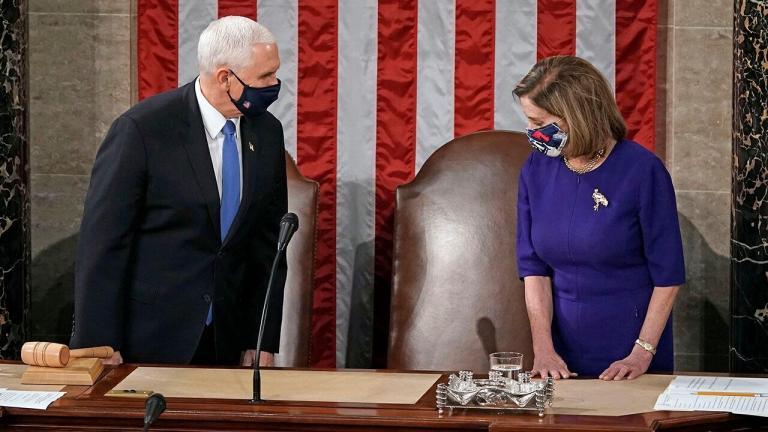Minnesota rethinks how it supports entrepreneurs and businesses
As cities and states face pandemic-induced budget shortfalls, they’re struggling to create playbooks to help businesses get back on their feet and put millions of unemployed Americans back to work.
The Brookings Institution projects that state and local government revenues will decline $167 billion in 2021, and $145 billion a year after that.
That doesn’t leave local and state policymakers with a lot of levers to pull to stimulate economic growth.
Related: Online micro-businesses can be an easy economic win for local governments
That puts the onus on these leaders to strike a careful balance: Come up with creative ways to help these businesses without depleting key funds that are needed to keep emergency service workers and teachers employed, as well as deliver adequate services to residents.
Thankfully, there are some models for supporting businesses of every shape and size, whether brick-and-mortar Main Street stores or home-based digital enterprises.
Among them is Launch Minnesota, a joint initiative between the state’s Department of Employment and Economic Development and the Minnesota Legislature.
Launched in October 2019, it’s a statewide collaborative effort designed to accelerate the growth of new businesses through grants, tax credits, education and building a collaborative network.
Although it was started with money before the pandemic and projected budget shortfalls, there are many things policymakers can learn from the program about supporting businesses now, which in turn will help their economies and communities grow down the line.
The program’s hub-and-spoke model consists of seven regional hubs — and a total of 60 public and private partners acting as spokes — which offer new businesses statewide access to education, support and fundraising guidance.

The program’s ultimate goal, says Neela Mollgaard, Launch Minnesota’s executive director, is to foster an innovation ecosystem that draws attention, talent and capital to the state’s businesses.
Mollgaard recently took time to explain how the program works and share how creative policymakers in other cities and states can replicate what Minnesota is doing to help.
Venture Forward: How does Launch Minnesota work?
Neela Mollgaard: We’re trying to do three things. First, we are creating access to capital through grants, angel tax credits and working with our investor community. Second, we’re increasing entrepreneurial knowledge on how to start and grow a business. And third, we hope to simplify the journey for our startups.
Our hub-and-spoke model creates a density of people, talent and resources in each of these regions and builds off the strengths of other organizations. Best practices and other statewide resources such as access to investors can be provided through these access spokes.
VF: Can you give us an example of how it works for an entrepreneur?
NM: Sure. Let’s say you’re a mom in Ely, Minnesota, which is a small city on the edge of the Boundary Waters Canoe Area Wilderness and historically home to several iron ore mines. She might have a full-time job, but she has this business idea for a new venture. Who does she turn to for mentorship?
She can now connect to Carla Pavone at the Center for Entrepreneurship at the University of Minnesota. She can take a virtual class on lean startup models and get access to mentors she would have never had before.
In Minnesota, we have a plethora of amazing organizations and talented people who want to give back. We want to make sure they can, and in a collaborative and coordinated way. With our program, resources are maximized across the state so local businesses and entrepreneurs can get the knowledge they need.
VF: One thing new businesses struggle with is access to capital. Launch Minnesota offers $35,000 innovation matching grants to help entrepreneurs get funding. How does that work?
NM: With taxpayer dollars, we have to be fiscally responsible. So high-tech startups that receive our innovation grants have 12 months to seek private matching investment. It’s a nice way for our businesses to reach out to private investors and say, ‘I’ve received a grant from the state, would you be able to match this?’
We also created a grant called the Housing and Childcare Grant to help reduce that risk of entry in launching a new business.
We know that launching a new business doesn’t come with the security of benefits and health insurance that these founders would have had if, say, they remained in a Fortune 500 company job instead of branching out on their own and launching a new venture. So we offer individual founders a $7,500 housing and childcare grant to offset those uncertainties.
VF: When you do impact analysis to assess the success of these programs, what are you looking at?
NM: We’ve only been operating a year, but we are proud of our progress. We’ve been able to get capital in the hands of startups, provide education to increase the knowledge of entrepreneurs and created a statewide network that simply didn’t exist before.
We are looking at numerous metrics to measure progress. We hope that the grant dollars to startups would advance their business.
For example, Were they able to move from idea formation to growth? Did they increase their revenue, hire new employees or consultants to round out their team, or acquire intellectual property?
VF: How important are state-level tax credits to promoting the funding of local businesses?
NM: I think the role of state government is to fill the gaps and to incentivize others to fill the gaps. Minnesota has a 25% angel investment tax credit which has spurred a great deal of investment.
Last year, we had $10 million that was fully allocated to investors. We were able to drive investment dollars from outside of Minnesota to support our businesses, which is phenomenal.
VF: What can policymakers in other states learn from what you’re doing?
NM: In Minnesota, we’re fortunate our governor and legislators allocated dollars to focus on the development of new technologies, startups and new ventures.
Research shows it’s important for government to assist in fostering an innovation ecosystem. Government can play a unique role by being a neutral entity to connect and convene people to help drive change and take action.
We’ve allocated funding to grants, tax credits, education and a clear path to navigate the wealth of resources.
Related: Four policy pillars that will encourage online micro-businesses
In other words, Launch Minnesota aims to be the front door for startups, to get the connections to resources, access to funding and education they need to grow.
The post Minnesota rethinks how it supports entrepreneurs and businesses appeared first on GoDaddy Blog.
Originally found on GoDaddy Garage Read More







